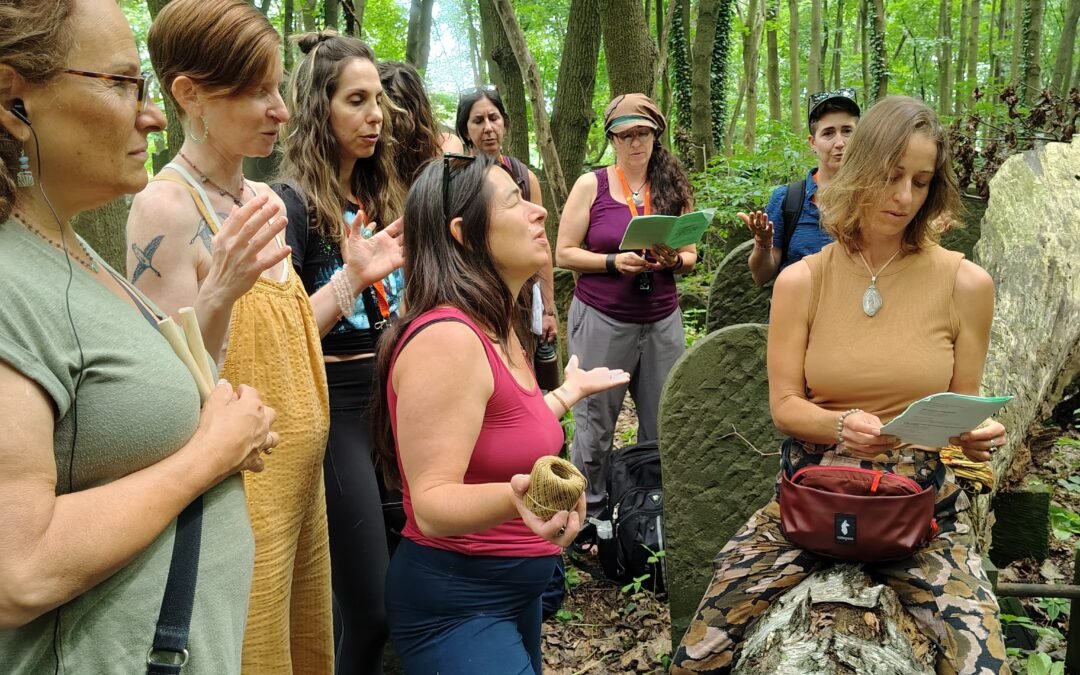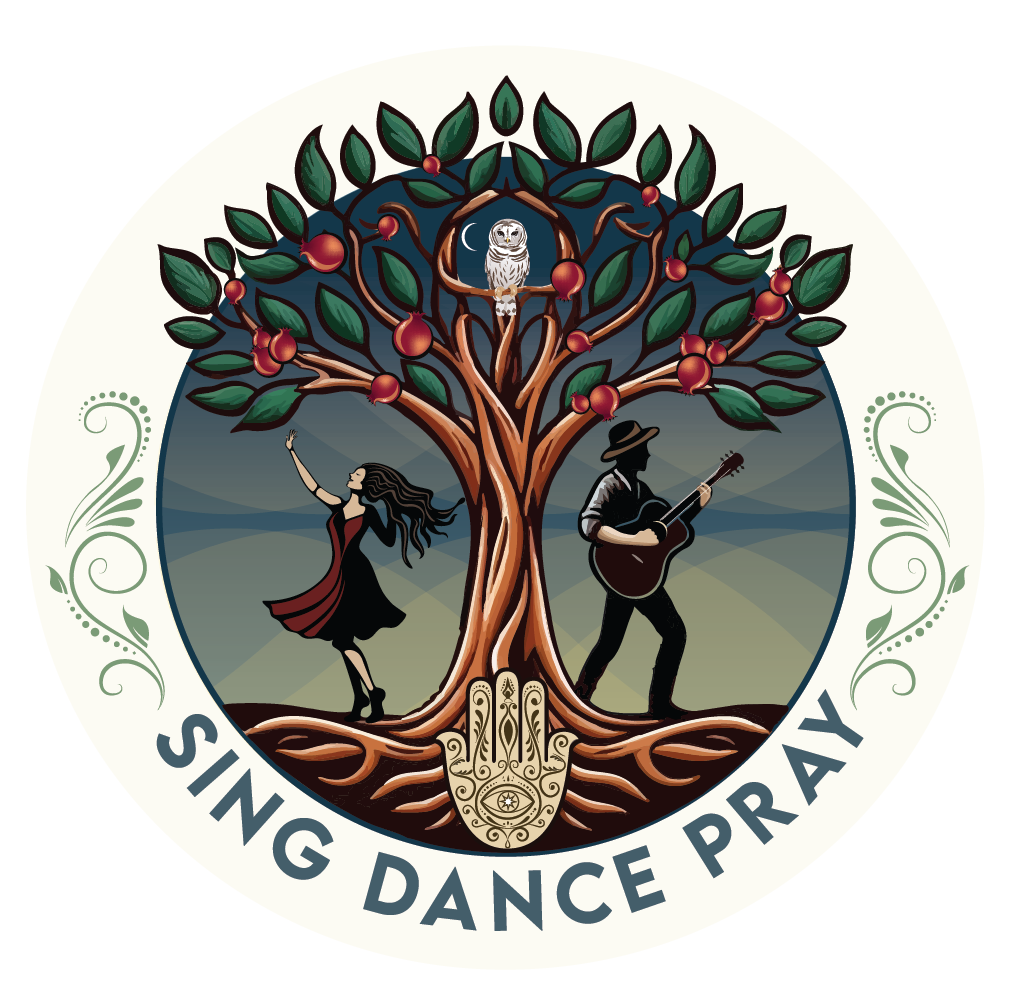Poland Pilgrimage #5
Content warning: includes brutality of ghetto life in Warsaw, Poland.
After our quick check in we were guided by our intrepid tour guide Martu Eichelberger-Jankowska into the streets. We discovered that we were standing in the old Warsaw Ghetto.
The Warsaw Ghetto was the largest of the Nazi ghettos during World War II and the Holocaust.
It was established in November 1940 by the German authorities within the new General Government territory of occupied Poland. At its height, as many as 460,000 Jews were imprisoned there.
In an area of 1.3 sq miles, people lived with an average of 9 persons per room, barely subsisting on meager food rations.
Jews were deported from the Warsaw Ghetto to Nazi concentration camps and mass-killing centers. In the summer of 1942, at least 254,000 ghetto residents were sent to the Treblinka extermination camp.
The ghetto was demolished by the Germans in May 1943 after the Warsaw Ghetto Uprising had temporarily halted the deportations.
The choice was not whether or not to die, but to have some agency in your death. How to die.
The total death toll among the prisoners of the ghetto is estimated to be at least 300,000 killed by bullet or gas combined with 92,000 victims of starvation. and related diseases, the Warsaw Ghetto Uprising, and the casualties of the final destruction of the ghetto.
Walking down the street we pause to hear that we are standing across from the Nazi Headquarters within the Ghetto and then suddenly we are standing before the remnants of the red brick Ghetto wall.
I stand there and imagine being shut into this space. I imagine living in one room with my family and another family with no food, no running water. One shared toilet (maybe)for the whole building.
I imagine the guards at the wall with guns and dogs and I imagine those who were able to sneak out as couriers of information, medicine, weapons, and food.
Nazi officials were intent on eradicating the ghetto by hunger and disease. They severely limited food and medical supplies. An average daily food ration in 1941 for Jews in Warsaw was limited to 184 calories.
184 calories.
We stopped at Umshlagplatz. The center of deportation where Jews were rounded up and deported like animals. Here on the memorial wall they couldn’t list hundreds of thousands of names so they included the most common first names found on the lists.
There I found my Hebrew name, my husband’s name and my son’s name.
We visited Warsaw’s impressive Polin museum of Jewish history in Poland. When were still about a block away thunder was booming in the sky and a torrential downpour began. Our umbrellas were useless as the water splashed up from the earth and soaked us.
The dry museum was a welcome refuge where we were served warm soup and dried off a bit before touring through the museum.
My favorite part of the museum was the end of the exhibit where a short video played of interviews with Jewish Poles of the present day. Such a complexity to be the living remnants of a people in a place with such a traumatic history.
How do you reckon with your identity in such an environment?
It’s hard to imagine as a Jewish person born and raised on the west coast of the United States. Such good education to receive.
We dined in the old city. Old but strange as it was completely rebuilt after the extensive bombing by the Nazi’s. It was built to look as it did pre-war but the buildings are actually less than 100 years old. So many questions about how history gets preserved or erased.
The next day we visited the museum across from the Taube Center for Jewish Life & Learning that houses the unearthed archives of the “Oyneg Shabbos”. These incredble humans were resisters in the ghetto who’s main purpose was to document in writing what they were experiencing and seeing in the Ghetto.
Their main goal was just to record and preserve the brutal reality behind the wall that they were certain the Nazis were going to do everything in their power to erase and destroy. They buried their archives in giant metal containers that were unearthed when the rubble was being cleared to build office buildings in the 50’s.
This museum crushed my heart.
Especially the writings and testimonies of mothers who knew their children were never going to survive this experience.
I stood before this sketch by a mother who was an artist. She drew the face of her two year old daughter just so she would not be eternally forgotten. And then the stories of mothers who were dragged with their children to the umshlagplatz and given the choice to surrender their children to deportation/death or be shot on the spot themselves.
We reconvened in a soggy tear stained heap across the street in the Taube center. With no bandwidth for the historical tour and talk we had scheduled for that afternoon, our beautiful Kohenet Jen Kiok suggested we learn the Yiddish song “Ale Brider” and find a place in the nearby park for a circle of prayer and ritual.
The song was written in 1890 and is a song of solidarity.
We walked into the streets singing it amidst quizzical Warsawians and carried it all the way to the park. Once we arrived, we found the place where the ghetto wall had run through.
We pulled out our soul candles, and other sacred objects and created a spontaneous altar as we circled around and spontaneously gave prayers of offering, gratitude, and petition. We sang and wept.
The healing flowed through us and the potency of our prayers lifted into the trees with the wind rustling the leaves. A small offering amidst a place holding so much trauma.
Later we visited the Okopova cemetery, the second largest Jewish cemetery in Europe. Okopova also contains a mass grave holding thousands of unnamed Jews.
There, with the help of a vague map, our crew searched for the tombstone of our beloved Sorah’s great great great grandfather. Cheers erupted when after bush-whacking through Ivy and overgrowth, the tombstone was found.
We surrounded her and prayed for her soul and Moshe’s soul and she performed Feldmestn wrapping the wick around the tombstone.
City noises continued their cacophony as thunder boomed and lightning flashed in the distance. I was grateful to be there and grateful to leave.
Chai ani, I am alive
Be careful when you build walls. Consider your intentions and what you enclose and why.
It might just begin to feel desperate, starved, and trapped. It might just find a way out.

